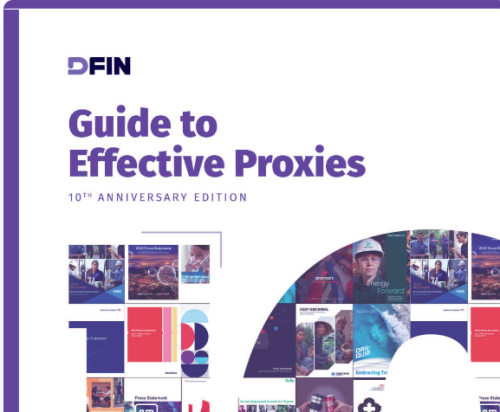More than half (53 percent) of investors say board diversity is top of mind going into the coming proxy season, according to the 2019 Proxy Season Preview report from the EY Center for Board Matters.
The survey of more than 60 institutional investors, with assets under management of $32 tn, shows investors are increasingly focused on board composition. This year’s figure of 53 percent saying the issue should be a top board focus is up from a third three years ago.
So what’s driving this push for greater diversity? ‘Simply put, a diverse board makes better, more robust decisions,’ Jamie Smith, associate director at EY Center for Board Matters, tells IR Magazine. ‘A wide range of studies demonstrate the benefits of board diversity, including how diverse perspectives enhance issue identification and problem-solving ability and impede group think. There is also growing evidence that companies with women directors have better business outcomes.
‘Further, a diverse board sets the tone at the top for the diverse talent a company seeks to attract, which can be a key enabler of growth and innovation and a strong competitive advantage in today’s marketplace. In recent years, we’ve seen the world’s largest asset managers increase attention to board diversity through engagement conversations with companies. We’re also starting to see more investors consider a lack of diversity as a reason to vote against the re-election of nominating/governance committee members.’
The key focus with diversity is on gender, race and ethnicity, says EY, though board refreshment, skill-sets and assessment approaches are also concerns for investors.
‘Many investors say they want to see boards recognize and truly embrace the value of diversity to decision-making and performance, including by fostering an inclusive board culture as well as embedding diversity considerations into recruitment and assessment policies,’ write the report authors. Investors add that engagement conversations on the subject reveal the extent to which a company is taking the issue seriously – or show whether boards are simply box ticking.
Change is slow, however, with the report authors noting that ‘the push for diversity is occurring against a backdrop of slow-moving change in the boardroom. From 2017 to 2018, the percentage of women-held S&P 1500 directorships inched up just two percentage points from 19 percent to 21 percent.’ At the same time, a lack of disclosure – sometimes for personal reasons – makes assessing racial and ethnic board diversity an ongoing challenge.
‘Director diversity by race or ethnicity remains difficult to track, with limited and varying approaches to voluntary disclosure,’ explains Smith. ‘There are different ways companies can provide this information effectively, while some investors prefer and are asking companies to implement a matrix disclosure approach that includes the disclosure of personal characteristics (such as gender, race or ethnicity) along with the skill-sets and areas of expertise directors bring to the board.’
She adds that an increasing number of companies are presenting this information in the form of graphics – more than half the S&P 500 did so last year, up from 20 percent three years ago.
Top three issues
After the focus on board diversity, the top three issues investors think should be top of mind for boards going into the 2019 proxy season both fall under the ESG umbrella, with environmental and social issues – climate change, in particular – and human capital concerns coming in second and third place, respectively.
Almost half (49 percent) say a top board focus should be environmental and social factors, notes EY, with most (38 percent) specifically focused on climate change, up from 15 percent three years ago.
But human capital has seen the biggest increase. More than a third (39 percent) of investors tell EY that human capital management and corporate culture should be a top board focus – a big jump from just 6 percent three years ago.
‘At a high level, investors want to understand how companies are integrating business-relevant environmental and social considerations into a sustainable strategy that creates long-term value for a wide range of stakeholders,’ says Smith. ‘How are companies thinking about relevant environmental risks and opportunities as part of their risk-management and strategy-setting processes? How are they considering the social impacts of their operations? How is the company addressing potential cultural and workforce issues to support long-term strategy and attract the best talent? How is the board governing specific ESG matters?
‘Reviewing the policies and stewardship reports of key shareholders and engaging them in direct dialogue on these topics can provide deeper insight into their expectations.’
She adds that companies should also ‘develop familiarity’ with external frameworks such as the Sustainability Accounting Standards Board and the Financial Stability Board’s Task Force on Climate-related Financial Disclosures ‘and consider how company disclosures align with those frameworks.’










